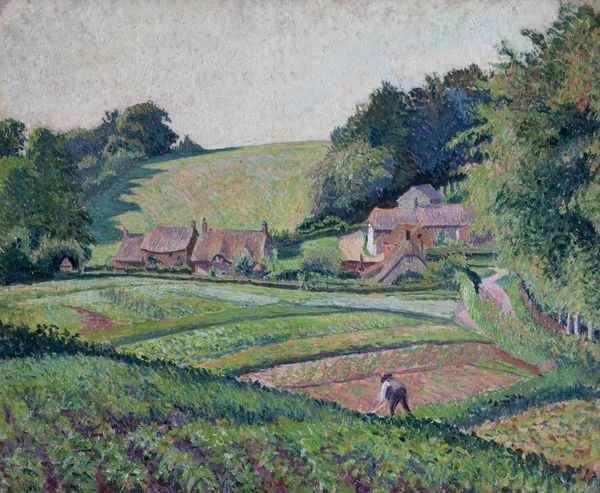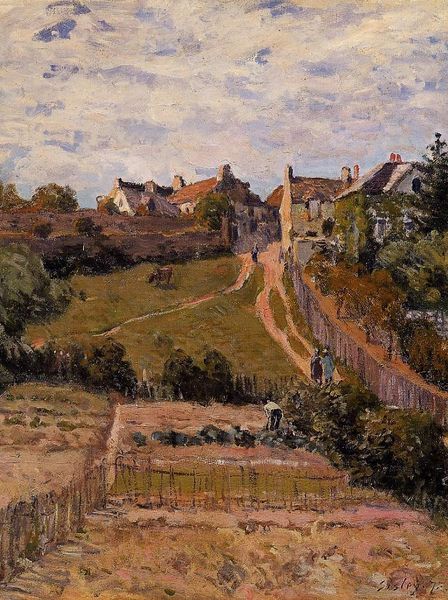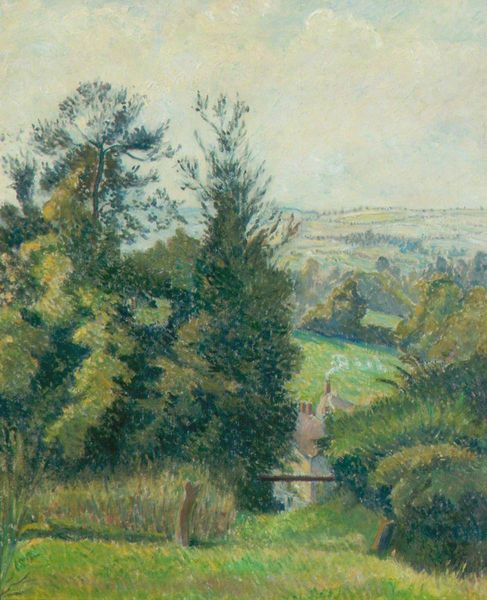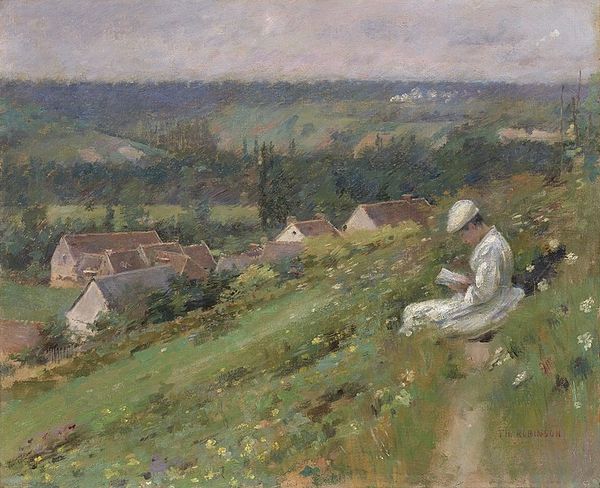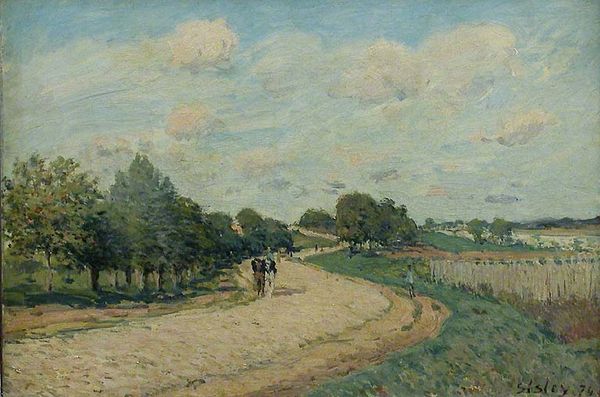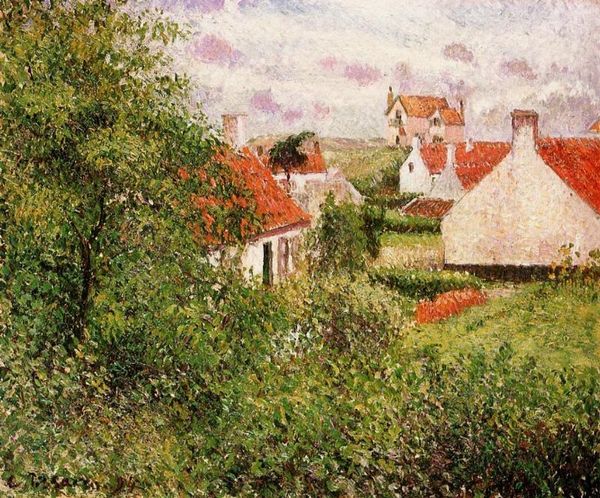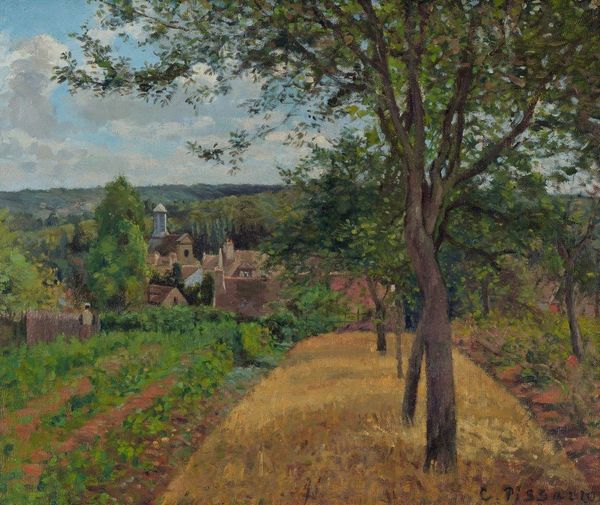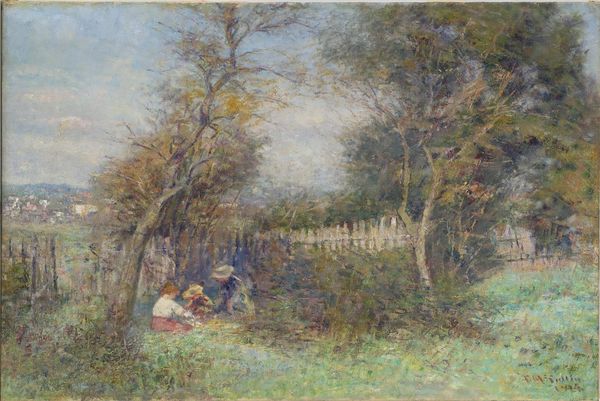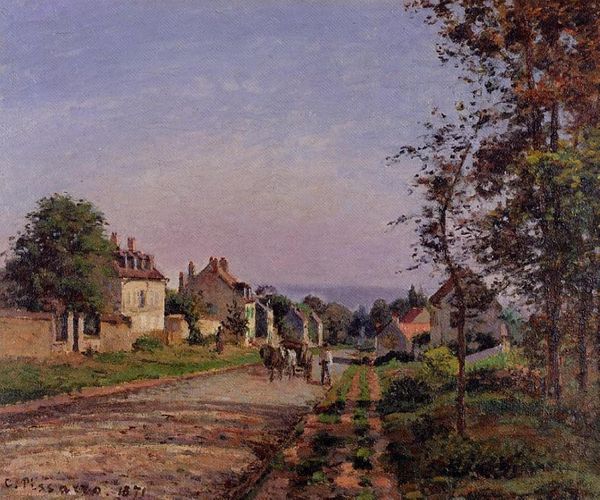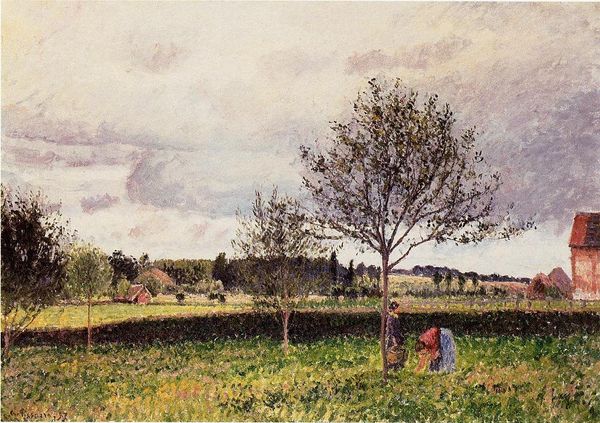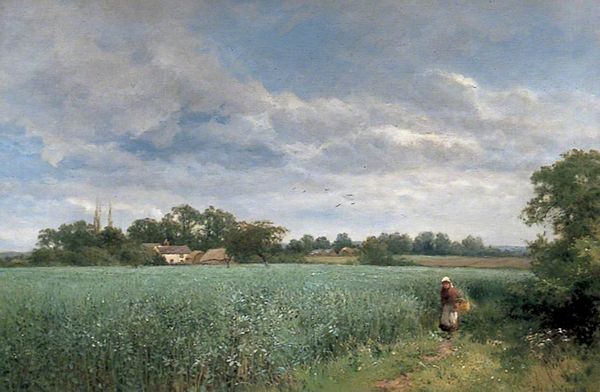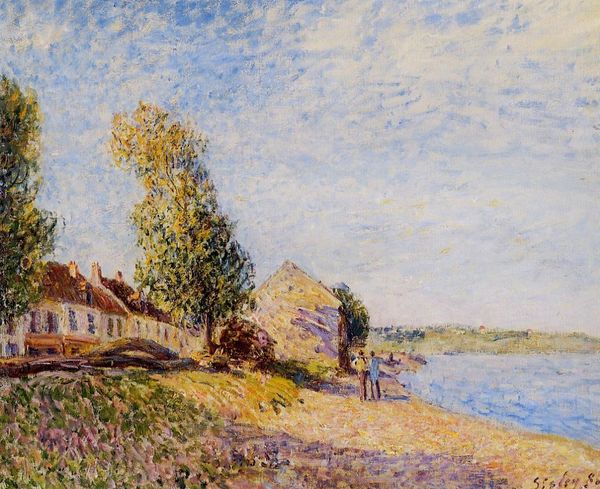
Copyright: Public domain
Curator: What a placid scene. "Landscape at Epping" by Lucien Pissarro, dating to 1893. An oil painting offering a window into rural life. It has that quiet energy that rural paintings in the Impressionist style often capture. Editor: There's a stillness, definitely, but also something quietly melancholic. It’s as if the hazy atmosphere is filtering the light, softening the edges of reality and imbuing the ordinary with a subtle sense of loss or longing. The color story is particularly muted with its emphasis on light green. Curator: I can see that. Epping Forest was a common subject in the late 19th century, representing a refuge from industrialization. Lucien Pissarro, son of Camille Pissarro, was deeply invested in capturing the everyday realities of rural laborers within that landscape, though, which has an inherent political dimension. How might you view the presence of the girl there, placed in proximity with labor? Editor: That figure introduces a certain Edenic symbolism to the scene, perhaps, echoing pastoral traditions of representing harmony with nature, a world outside the industrial logic. Consider her attire, reminiscent of idealized peasantry with a connection to both natural harmony and purity. But the presence of those modest but new homes along the ridge suggests something more specific is going on here: maybe these are some of the first inhabitants that made their lives outside the margins of Epping Forest, where this child has some connection. The colors have also faded over time so the symbolism may be lost to us to some degree. Curator: That tension between the idealized rural existence and the encroaching realities of a changing world—industrial expansion and new living circumstances—feels key here. The painting seems to encapsulate that moment of transition, offering a commentary on labor, childhood, and the transformation of the landscape, all from a distinct class perspective. I appreciate that you keyed in on that. Editor: It's in these humble depictions that history often whispers loudest. To understand, though, what the world meant to these newcomers: it requires close inspection and an imaginative consideration. I’ve become deeply curious. Curator: And now, maybe some of our listeners are, too. That's what's exciting!
Comments
No comments
Be the first to comment and join the conversation on the ultimate creative platform.
